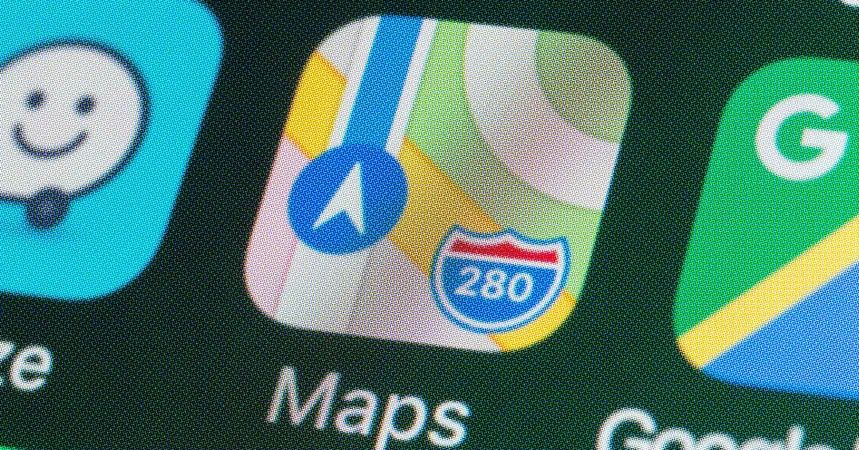
4 Surprising Ways Apple Maps Outshines Google Maps
2025-01-21
Author: Jessica Wong
4 Surprising Ways Apple Maps Outshines Google Maps
After a rocky launch marred by outrageous blunders, like directing users into rivers back in 2012, Apple Maps has undergone a transformation that may surprise even the most skeptical users. The app has been through years of refinement and now stands on equal footing with Google Maps, particularly for turn-by-turn navigation. While it’s true that Google enjoys a more extensive database of businesses, Apple Maps has carved out its own niche and excels in several unexpected areas. Here’s a closer look at how Apple Maps makes a compelling case for users to give it another shot.
1. Clearer Navigation Instructions
One of the standout features of Apple Maps is its audio instructions, which many users find to be much clearer compared to Google Maps. Instead of relying on a technical distance measurement to prompt a turn, Apple Maps opts for plain language that’s easier to comprehend—like instructing you to turn right at the next traffic light rather than at the next street. This user-friendly approach creates an experience akin to having a knowledgeable navigator sitting right beside you. Plus, Apple's voices are often regarded as clearer and more engaging, enhancing your navigation experience.
2. Effortless Transit Updates
If you often rely on public transportation, you'll appreciate Apple Maps' “Nearby Transit” feature, which quickly provides a list of upcoming buses and trains in your vicinity. This feature comes in handy when waiting at a station or planning your departure from a restaurant. Google Maps, while capable of offering similar transit options, lacks the flexibility to display real-time upcoming arrivals at multiple stations simultaneously. This speeds up decision-making for users who want to evaluate their transportation options at a glance, making it a game-changer for commuters.
3. Seamless Integration with Apple’s Ecosystem
Apple Maps is not just an independent navigation tool; it integrates deeply with Apple’s ecosystem. For instance, users can use Apple Shortcuts to create automations like saving their parking spot directly from their home screen—something that you wouldn't be able to do with Google Maps due to its lack of Shortcuts integration. Moreover, other Apple apps, such as Calendar and Siri, default to Apple Maps for directions, enhancing convenience for users deeply embedded in the Apple environment.
4. A Simpler, Cleaner Interface
When comparing the visual aesthetics of both apps, Apple Maps impresses with a cleaner interface that minimizes clutter. While Google Maps has accumulated features over time, this often leads to a confusing interface filled with toolbars and advertisements. On the other hand, Apple Maps prioritizes user experience with a more straightforward design, allowing clearer geographic references without overwhelming the user.
While it’s essential to acknowledge that Google Maps certainly has its advantages—like its extensive information on businesses, which remains a clear strength—Apple Maps has come a long way since its rocky beginnings. During a recent travel experience in a remote area, for example, you might find Google excels, but for everyday navigation, Apple Maps provides impressive features that many users might overlook.
If you’re one of those who abandoned Apple Maps years ago, it’s time to give it another chance; you might just find it outshining Google Maps in ways you never expected!



 Brasil (PT)
Brasil (PT)
 Canada (EN)
Canada (EN)
 Chile (ES)
Chile (ES)
 Česko (CS)
Česko (CS)
 대한민국 (KO)
대한민국 (KO)
 España (ES)
España (ES)
 France (FR)
France (FR)
 Hong Kong (EN)
Hong Kong (EN)
 Italia (IT)
Italia (IT)
 日本 (JA)
日本 (JA)
 Magyarország (HU)
Magyarország (HU)
 Norge (NO)
Norge (NO)
 Polska (PL)
Polska (PL)
 Schweiz (DE)
Schweiz (DE)
 Singapore (EN)
Singapore (EN)
 Sverige (SV)
Sverige (SV)
 Suomi (FI)
Suomi (FI)
 Türkiye (TR)
Türkiye (TR)
 الإمارات العربية المتحدة (AR)
الإمارات العربية المتحدة (AR)